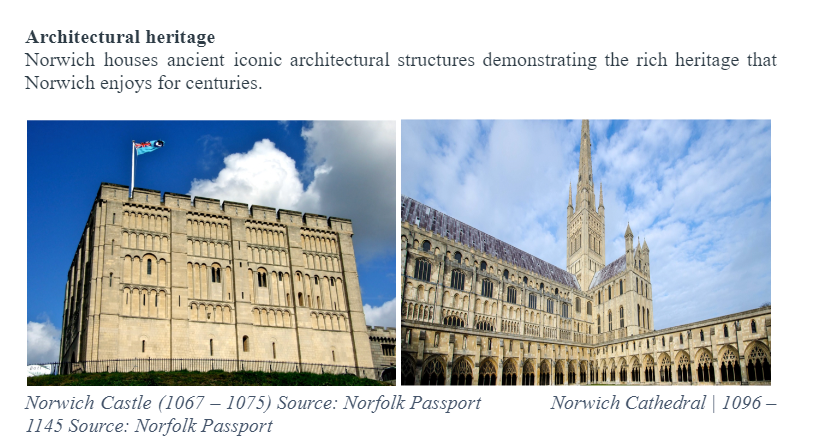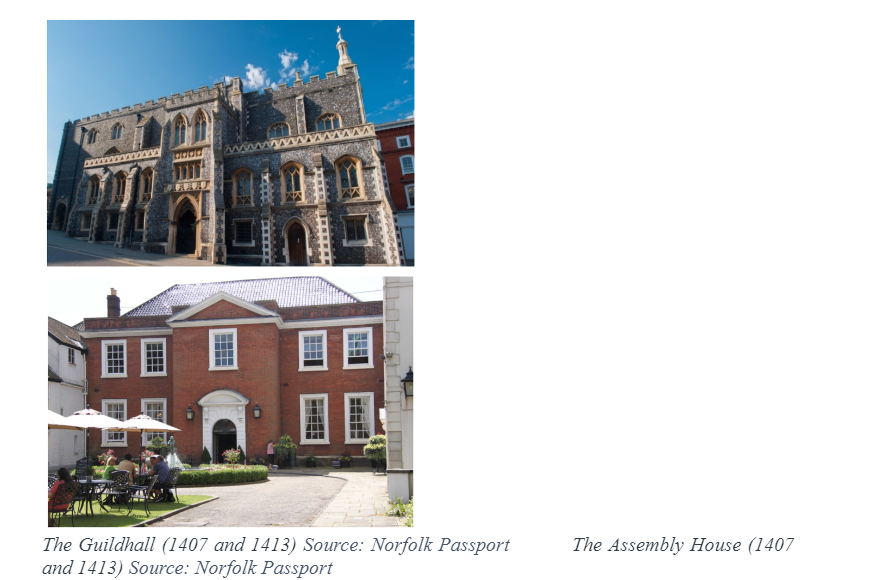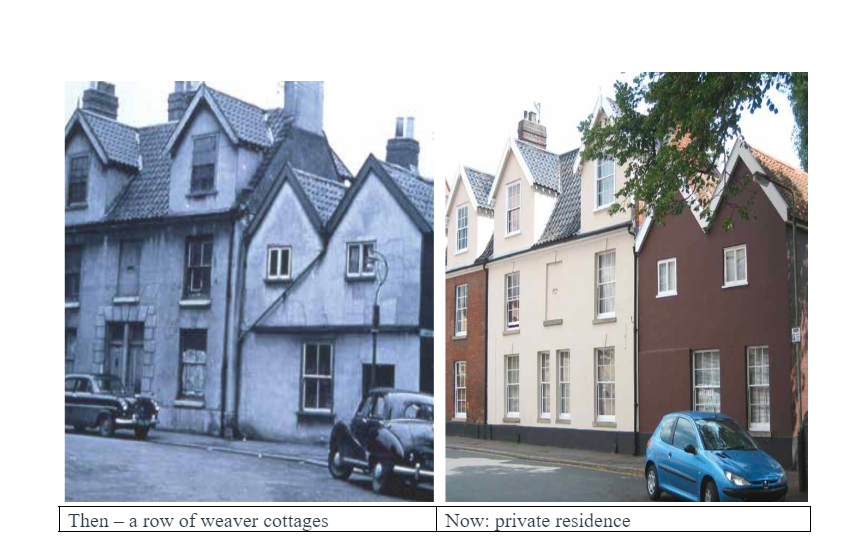The Ancient Foundations of Norwich: A Roman Legacy
Introduction

The foundation of the city of Norwich has an ancient history. Legends say that Romans had built a castle in this city and established themselves in Norfolk about A.D., 46, under Claudius Caesar by overthrowing the aboriginals. The Romans had invited these aboriginals to assemble around their military stations or had built fortifications near the British towns. The most considerable military station was the Venta-Icenorum at Caistor. These events continued the principle station of the Romans in Icene until 426 A.D. when Roman left Britain. Caistor started decaying and the British inhabitants shifted their dwelling in 446 A.D. to the place where the city of Norwich now stands, receiving British dissertation help in rebuilding and establishing the new settlement.
The name of the city came into being when the Saxons usurped, who came invited to assist the Britons against the Picts and Scots. Afterwards, the Saxon took on the Britons and divided Britain into seven Anglo-Saxon kingdoms, one of which was the East Anglia. The Norfolk became part of East Anglia. Norwich was formed around 575 A.D. by the second prince of East Anglia, Uffa by making a strong entrenchment of earth on the site of a castle, which was encircled by three broad ramparts and many ditches. Norwich became a Royal city and the capital of East Anglia.

Communities of different settlors
The ancient history of Norwich makes this city home to inhabitants who were original aboriginals and who were invaders and settlors from outside this city. This city saw the aboriginals and English and American history. The history of aboriginals is reflected in the section of the city, known as the ‘Yantic’, or Yantuck, which is an aboriginal name. It belonged to the planters and its strips of meadow are highly prized for natives for the grass they provide for the cattle. Earlier, Yantic was associated with the Bankus family and their range of belongings, such as the Backus iron works, the Backus mansion and woods, meadows and heights. Then, came the modern manufacturing activities since the 1820. The growth of business saw the establishment of community arising from manufacturing privileges. One such example is the establishment of Greeneville, which came into being due to its founders, William C. Gilman, who made the first purchase and William P. Greene, who laid down the plan. Projects of dams, canals and factories came into being along with the dwelling houses and families. A well-ordered and prosperous community came into being.

The city of Norwich is also a home of various inhabitants, who came to the city as exiles from facing religions prosecution and who came as persons of trade. Norwich has the Dutch settlors, popularly known as the ‘Strangers’, who were Protestant refuges invited by the authorities of Norwich to work in the weaving industry from their Netherlands. They built the fine houses in the area by the 18th century. Every particular settling community has a long history with the city. Norwich has the Jews community, which has a long history with Norwich. Dove Street, previously known as Holtor Lane, saw the first know Synagogue that dated between 1087 and 1100. The Jews mainly settled below the Castle, which is now known as the White Lion Street area. The Castle house the King’s representative. The Jews who came to Norwich survived the 11th century Crusades directed against European Jews. They followed William, the Conqueror to England after his invasion in 1066. The Jews were great moneylenders and they helped finance William’s conquest of England. Their money lending skills allowed them to Norwich, which needed money to facilitate its businesses.

Norwich has seen the settling of range of minorities or communities. Each community has brought with them particular trade or skills. Flemish and Belgian communities brought weaving during the 16th and 17th centuries. They came to Norwich during the great 1567 "stranger" immigration. This immigration brought the Flemish and Walloon communities of Protestant weavers. During the medieval period, wool became the backbone of and the driving force of the economy of Britain. A symbolic representation is the seat of the Lord High Chancellor in the House of Lords, which is a large square bag of wool, popularly known as the ‘woolsack’. Similar to the importance of wool is the advanced textile techniques and pet canaries that the Flemings in exile from the 16th century Spanish persecution. Thomas Howard, the fourth Duke of Norfolk received a royal license in 1565 for the ’30 Dutchmen of the Low Countries of Flanders’. They and their families made outlandish commodities such as tapestry, arras, bays, and mockadoes. Similarly, the Huguenot from France came bringing skills such as goldsmithing and bookmaking to the country.
Norwich is a place where all diverse communities have come together bringing along new skillset, occupation and trade to build the society as it is today. The development pattern of diversity is still reflected in the current population of diverse communities in Norwich. The 2019 census shows a detailed ethnic composition.





The Industrial Revolution did not affect Norwich. It was able to retain its remarkable architecture of the 14th and the 15th centuries. So, it has a greatest collections of historic buildings, religious and secular and other buildings of historic importance.

Norwich has a Norman Castle, 32 mediaeval churches, two Cathedrals, finest Non-Conformist chapels, and the largest surviving Friary church. In Norwich, every streetscape showcases notable mediaeval, Georgian, Stuart, Tudor, and Victorian buildings on. Many of the structures are Scheduled Ancient Monuments or listed building. There is a historical story behind each structure. The Nathaniel Backus House, built in 1750 and currently located at 44 Rockwell St., was owned by a carriage owner. It is now a museum. The DeWitt House, built in the late 1700s and located at 189 Broadway, served as the Lydia Huntley Sigourney School for young girls. The John Vernet’s house, located at 118 Washington St. and built in 1809 by Mr. Vernet, was used as a stop on the Underground Railroad and in the 1920s, was used as rectory of Christ Episcopal Church for sometimes.

Many of the old monuments are restored and are put to different uses, as office, museums or private residence. Like the row of weavers’ cottages from the 17th century such as the one shown above. They belong to the era of the 1480s, developed in 1970 as flats and private cottages and located in Muspole Street. They are Grad II listed buildings now. Some of the ancient buildings were built by rich private owners. The Strangers’ Hall is one of them. It was a merchant's house, built in the early 14th century for a wealthy merchant called Ralph de Middleton.. This house was rebuilt In c.1450 by another merchant called William Barley, who turned the upper storey through ninety degrees to make the house run parallel to the street, which can be seen now. The last private owner was local solicitor and avid antiques collector, Leonard Bolingbroke. He saved Strangers’ Hall from demolition. The Hall was furnished with his own collection of antiques. He opened it to the public in 1890 as a folk museum. He then presented Strangers’ Hall and its contents to the City of Norwich in 1922.

The architectural heritage of Norwich is due to contribution of many great architects, old and new. Some of them are Henry Bell (1647-1711) for the Customs House of 1683, Edward Boardman (1833-1910) for the Royal Hotel of 1897, Matthew Brettingham (1699-1769)
For building Holkham Hall, Samuel Wyatt for Holkham Estate, and A Waterhouse for the Crimplesham Hall in 1881.
Arts and Cultural diversity

It comes to no surprise that in 2012 Norwich was designated as first UNESCO City of Literature in England. According to The Writers' Centre Norwich (WCN), this city saw the first book in English written by a woman and the first provincial newspaper. Literature has deep roots in Norwich. Mr McEwan, a British novelist, short-story writer, and screenwriter said that writers see Norwich a dreamy city for centuries. Norwich is the first UK City of Refuge because of its many persecuted writers. Recently, its city library was considered the busiest library in the country. This city is known for where Christian mystic Julian of Norwich also known as Dame Julian or Mother Julian (1342-1416) had spent much of her life in a cell in St Julian's Church. She wrote the Revelations of Divine Love. She was the first woman to be published in English. Norwich also had Henry Howard, Earl of Surrey (1517-1547), who is well famous and remembered to give the first blank verse and sonnet form. This was used by Shakespeare and Thomas Paine. It influenced the American Constitution regarding the rights of man. Norwich has the University of East Anglia, which is world famous for its creative writing course. It annually hosts two international literary festivals.
Norwich also has a rich arts and cultural life. Arts plays a vital role in the economy, health, community and social life of the place. There are important community oriented arts centre. The Norwich Arts Centre Regeneration in one of them and is 40 years old. It is internationally recognised as a contemporary arts venue. It annually holds programme of live music, dance, live art, visual art, comedy and literature. Similarly, the Young Norfolk Arts Festival every July holds the Young Norfolk Arts Festival (YNAF). Norwich shows strong community feeling and coordination. It runs community programmes like the Freshly Greated, which focuses on community cultural development programme. It is hugely supported by the Arts Council England. The Creative People and Places Fund funds it with £1.1 million of National Lottery funding.

Norwich has, in its history, the use of theatre to protest and raise political and social issues. In a play in 1716 held at a play at the New Inn, the audience cheered the Pretender, but ‘hissed’ when King George name was mentioned in the play. During that time, there were rampant Whiggery (support for the principles of the British Whig Party) and anti-populist civic measures. This encouraged protests and popular demonstration of public sympathy for the ousted Stuarts.
Norwich is also known for famous intellectuals. Norwich, during the opening decades of the 19th century, became an intellectual centre. It was known for its progressive thinking and serious discussion. Norwich is/was home to many intellectuals, including William Taylor, Sarah Austin, Amelia Opie and many others.

Norwich, from its ancient times, has seen thriving trade and commerce. It saw a considerable trade in wool. The Norman Conquest brought national industry and wealth. Norwich became populous with home and foreign trade. The Flemings brought weaving. Edward III made Norwich the most flourishing city with trades in wools, worsteds, fustians and friezes. Recently, Norwich was considered a fastest growing city in the UK. It was ranked 20/379 being part of the Fast Growth Cities network. It is known for its overall competitiveness as reported by the PWC Index 2016. Norwich’s economic dynamism reflects the regional economy, which is an economic driver. Like old time, its Norwich is the regional service centre where all services including retail, health, and leisure come together. It provides major employment with two-thirds of the Travel to Work Area’s jobs. Office spaces are located in the urban area of the city. The city centre houses most of the office spaces.
The 2017 Lloyds Bank’s housing affordability report ranked Norwich’s housing market the 15th most expensive in the UK. It is a desirable place to live and work. It houses high value finance and business services, media and publishing, creative sector, and other production and manufacturing cluster. Also, the city core acts as a hub for arts and education. It has the University of East Anglia, Norwich University of the Arts and City College Norwich, which supply skilled labour force to the city.
Is Norwich’s local community history a good model to research for modern community development reference?

The youtube video by Norfolk Now (below) shows the heritage of Norwich and the ancient stories associated with this city. Norwich is the only city ranked this year 20210 by the Sunday Times as one of the 'best places to live'. It is ranked one of the eight spots amongst 101 in East of England as a lovely place across the country. It is a vibrant city with more youth population below 34 years of age. It has excellent cycle network, theatres, shops and theatres. It is a good place for families and bring up children.


The beautiful history of how the city was founded with contribution from both the original settlors and settlors that gradually came to the city makes the city a wonderful piece of historical study. The Yantic, the Dutch settlors or the Strangers, the Jews, the Flemish and Belgians all brought progressive skills and trade to the city, which makes the city as it is now. The diverse form of architectural heritage will not be in existence had it not been for the historical development and contributions by the ancestral inhabitants of the city. Norwich, as a city, is blessed with and by the people that lived and are living here with their priorities on the cultural, political, economic and social preservation and development.
Continue your journey with our comprehensive guide to The Agency Principal Relationship.
Bibliography
Primary Sources
BAYNE, A. D., A History of the Industry and Trade of Norwich and Norfolk ... Second edition (1858, Matchett & Stevenson)
British Association for the Advancement of Science, British Association for the Advancement of Science. Norwich Local Executive Committee, Norwich and Its Region (196, Norwich Local Executive Committee of the British Association)
Caulkins, FM, History of Norwich, Connecticut: From Its Possession by the Indians to the Year 1866 (1874, H.P. Haven)
Francis White & Co., History, Gazetteer, and Directory, of Norfolk, and the City and County of the City of Norwich. (1854, Francis White & Co.)
Peck, LL, Consuming Splendor: Society and Culture in Seventeenth-Century England (2005, Cambridge University Press)
Rawcliffe, C, Christine Clark and Richard Wilson, Norwich Since 1550 (2004, Hambledon & London)
Planning, Design, and Management of Traffic-free Zones (1977, Whitney Library of Design).
Secondary Sources
Anderson, S, ‘Two Norfolk spots make the Sunday Times' 'best places to live' list’ (2021) [Accessed 8th April 2021 at:https://www.edp24.co.uk/news/wells-norwich-times-list-of-best-places-live-7850570].
BBC News, ‘Norwich named as UNESCO City of Literature’ (2012) [Accessed 8th April 2021 at: https://www.bbc.com/news/uk-england-norfolk-18016481]
Johnson, B, ‘History of the Wool Trade’ [Accessed 8th April 2021 at: https://www.historic-uk.com/HistoryUK/HistoryofEngland/Wool-Trade/].
Leveton, M, ‘THE JEWS IN NORWICH 11TH TO 21ST CENTURY’. (2020) [Accessed 8th April 2021 at: https://www.norwichsynagogue.org.uk/worship/history-of-worship-in-norwich/].
Norwich360,‘Strangers’ Hall’ [Accessed 8th April 2021 at: https://www.norwich360.com/strangershall.html].
Norwich City Council ‘Norwich Economic Analysis A dynamic, resilient, growth-oriented economy’ Research commissioned by Norwich City Council into the functional economic geography of Norwich and its growth potential June 2017 [[Accessed 8th April 2021 at: https://www.norwich.gov.uk/download/downloads/id/4344/norwich_gva_report_executive_summary.pdf].
Norfolk County Council, ‘Norfolk Architects’ [Accessed 8th April 2021 at: https://www.heritage.norfolk.gov.uk/record-details?TNF2318-Norfolk-Architects-(Article)].
Norfolk County Council, ‘Norfolk ARTS Service THE ARTS IN NORFOLK: AN OVERVIEW 2019–20’ [Accessed 8th April 2021 at: https://www.norfolk.gov.uk/-/media/norfolk/downloads/what-we-do-and-how-we-work/policy-performance-and-partnerships/partnerships/arts-forum/the-arts-in-norfolk-an-overview-2019-20.pdf].
Norfolk Passport, ‘Top 5 Iconic Norwich buildings’ [Accessed 8th April 2021 at: https://www.norfolkpassport.com/top-5-things/top-5-iconic-norwich-buildings/top-5-iconic-norwich-buildings].
Norwich Preservation Trust, ‘Giving the past a future’ [Accessed 8th April 2021 at: https://norwichpreservationtrust.co.uk/wp-content/uploads/2014/06/NPT-brochure.pdf].
Curland, R, ‘Historically Speaking: Norwich has rich store of historical buildings’ (2020) [Accessed 8th April 2021 at: https://www.norwichbulletin.com/story/news/columns/2020/09/20/historically-speaking-norwich-has-rich-store-of-historical-buildings/114093112/]
- 24/7 Customer Support
- 100% Customer Satisfaction
- No Privacy Violation
- Quick Services
- Subject Experts



